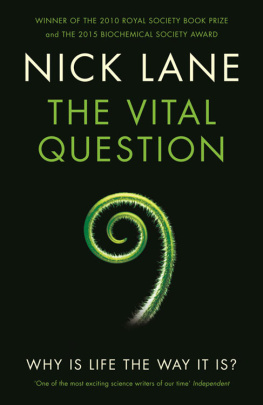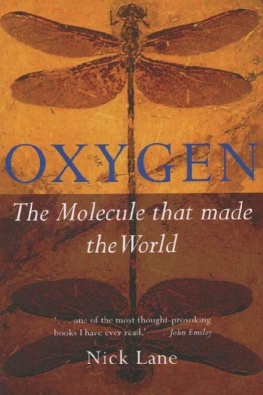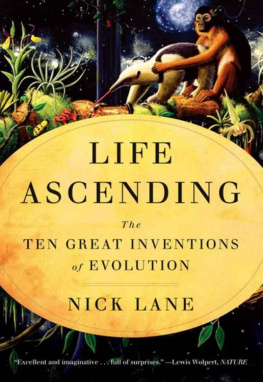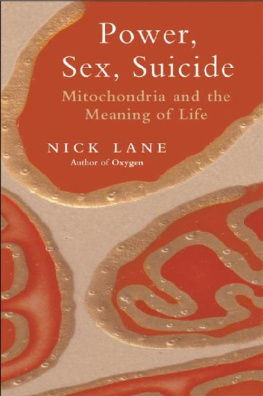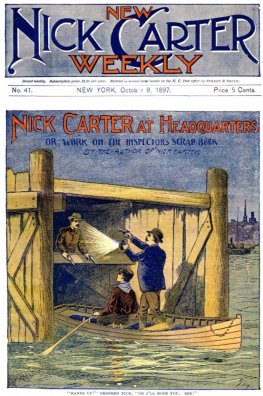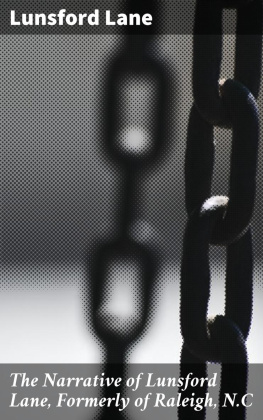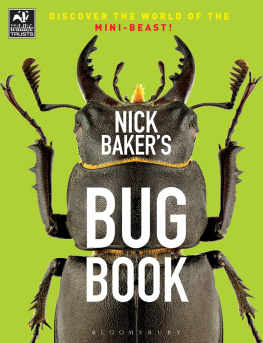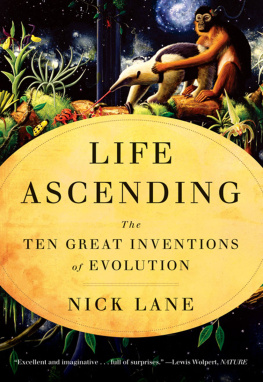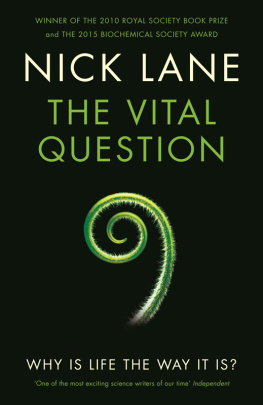Nick Lane - The Vital Question: Why Is Life the Way It Is?
Here you can read online Nick Lane - The Vital Question: Why Is Life the Way It Is? full text of the book (entire story) in english for free. Download pdf and epub, get meaning, cover and reviews about this ebook. year: 2015, publisher: Profile Books, genre: Art. Description of the work, (preface) as well as reviews are available. Best literature library LitArk.com created for fans of good reading and offers a wide selection of genres:
Romance novel
Science fiction
Adventure
Detective
Science
History
Home and family
Prose
Art
Politics
Computer
Non-fiction
Religion
Business
Children
Humor
Choose a favorite category and find really read worthwhile books. Enjoy immersion in the world of imagination, feel the emotions of the characters or learn something new for yourself, make an fascinating discovery.
The Vital Question: Why Is Life the Way It Is?: summary, description and annotation
We offer to read an annotation, description, summary or preface (depends on what the author of the book "The Vital Question: Why Is Life the Way It Is?" wrote himself). If you haven't found the necessary information about the book — write in the comments, we will try to find it.
Nick Lane: author's other books
Who wrote The Vital Question: Why Is Life the Way It Is?? Find out the surname, the name of the author of the book and a list of all author's works by series.
The Vital Question: Why Is Life the Way It Is? — read online for free the complete book (whole text) full work
Below is the text of the book, divided by pages. System saving the place of the last page read, allows you to conveniently read the book "The Vital Question: Why Is Life the Way It Is?" online for free, without having to search again every time where you left off. Put a bookmark, and you can go to the page where you finished reading at any time.
Font size:
Interval:
Bookmark:
THE VITAL QUESTION

WHY IS LIFE THE WAY IT IS?
NICK LANE

OceanofPDF.com
First published in Great Britain in 2015 by PROFILE BOOKS LTD
London
WC1X 9HD
www.profilebooks.com
Copyright Nick Lane, 2015
The moral right of the author has been asserted.
All rights reserved.
Without limiting the rights under copyright reserved above, no part of this publication may be reproduced, stored or introduced into a retrieval system, or transmitted, in any form or by any means (electronic, mechanical, photocopying, recording or otherwise), without the prior written permission of both the copyright owner and the publisher of this book.
A CIP catalogue record for this book is available from the British Library.
eISBN 978 1 84765 880 7
OceanofPDF.com
For Ana
My inspiration and companion On this magical journey
OceanofPDF.com
CONTENTS
OceanofPDF.com
THE VITAL QUESTION

OceanofPDF.com
INTRODUCTION:
WHY IS LIFE THE WAY IT IS?

T here is a black hole at the heart of biology. Bluntly put, we do not know why life is the way it is. All complex life on earth shares a common ancestor, a cell that arose from simple bacterial progenitors on just one occasion in 4 billion years. Was this a freak accident, or did other experiments in the evolution of complexity fail? We dont know. We do know that this common ancestor was already a very complex cell. It had more or less the same sophistication as one of your cells, and it passed this great complexity on not just to you and me but to all its descendants, from trees to bees. I challenge you to look at one of your own cells down a microscope and distinguish it from the cells of a mushroom. They are practically identical. I dont live much like a mushroom, so why are my cells so similar? Its not just that they look alike. All complex life shares an astonishing catalogue of elaborate traits, from sex to cell suicide to senescence, none of which is seen in a comparable form in bacteria. There is no agreement about why so many unique traits accumulated in that single ancestor, or why none of them shows any sign of evolving independently in bacteria. Why, if all of these traits arose by natural selection, in which each step offers some small advantage, did equivalent traits not arise on other occasions in various bacterial groups?
These questions highlight the peculiar evolutionary trajectory of life on earth. Life arose around half a billion years after the earths formation, perhaps 4 billion years ago, but then got stuck at the bacterial level of complexity for more than 2 billion years, half the age of our planet. Indeed, bacteria have remained simple in their morphology (but not their biochemistry) throughout 4 billion years. In stark contrast, all morphologically complex organisms all plants, animals, fungi, seaweeds and single-celled protists such as amoeba descend from that singular ancestor about 1.52 billion years ago. This ancestor was recognisably a modern cell, with an exquisite internal structure and unprecedented molecular dynamism, all driven by sophisticated nanomachines encoded by thousands of new genes that are largely unknown in bacteria. There are no surviving evolutionary intermediates, no missing links to give any indication of how or why these complex traits arose, just an unexplained void between the morphological simplicity of bacteria and the awesome complexity of everything else. An evolutionary black hole.
We spend billions of dollars a year on biomedical research, teasing out the answers to unimaginably complex questions about why we get ill. We know in enormous detail how genes and proteins relate to each other, how regulatory networks feed back into each other. We build elaborate mathematical models and design computer simulations to play out our projections. Yet we dont know how the parts evolved! How can we hope to understand disease if we have no idea why cells work the way they do? We cant understand society if we know nothing of its history; nor can we understand the workings of the cell if we dont know how it evolved. This isnt just a matter of practical importance. These are human questions about why we are here. What laws gave rise to the universe, the stars, the sun, the earth, and life itself? Will the same laws beget life elsewhere in the universe? Would alien life be anything like us? Such metaphysical questions lie at the heart of what makes us human. Some 350 years after the discovery of cells, we still dont know why life on earth is the way it is.
You might not have noticed that we dont know. Its not your fault. Text books and journals are full of information, but often fail to address these childlike questions. The internet swamps us with all manner of indiscriminate facts, mixed with varying proportions of nonsense. But its not merely a case of information overload. Few biologists are more than dimly aware of the black hole at the heart of their subject. Most work on other questions. The great majority study large organisms, particular groups of plants or animals. Relatively few work on microbes, and even fewer on the early evolution of cells. Theres also a concern about creationists and intelligent design to admit we dont know all the answers risks opening the door to naysayers, who deny that we have any meaningful knowledge of evolution. Of course we do. We know an awful lot. Hypotheses on the origins of life and the early evolution of cells must explain an encyclopedia of facts, conform to a straitjacket of knowledge, as well as predict unexpected relationships that can be tested empirically. We understand a great deal about natural selection and some of the more random processes that sculpt genomes. All these facts are consistent with the evolution of cells. But this same straitjacket of facts is precisely what raises the problem. We dont know why life took the peculiar course that it did.
Scientists are curious people, and if this problem were as stark as Im suggesting, it would be well known. The fact is its far from obvious. The various competing answers are esoteric, and all but obscure the question. Then theres the problem that clues come from many disparate disciplines, from biochemistry, geology, phylogenetics, ecology, chemistry and cosmology. Few can claim real expertise in all those fields. And now we are in the midst of a genomic revolution. We have thousands of complete genome sequences, codes that stretch over millions or billions of digits, all too often containing conflicting signals from the deep past. Interpreting these data demands rigorous logical, computational and statistical know-how; any biological understanding is a bonus. And so the clouds have been swirling around with arguments. Each time a gap opens up, it reveals an increasingly surreal landscape. The old comforts have been evaporating. Were now faced with a stark new picture, and its both real and troubling. And from a researchers standpoint, hoping to find some significant new problem to solve, its flat out thrilling! The biggest questions in biology are yet to be solved. This book is my own attempt to make a start.
How do bacteria relate to complex life? The roots of the question date right back to the discovery of microbes by the Dutch microscopist Antony van Leeuwenhoek in the 1670s. His menagerie of little animals thriving under the microscope took some believing, but was soon confirmed by the equally ingenious Robert Hooke. Leeuwenhoek also discovered bacteria, and wrote about them in a famous paper of 1677: they were incredibly small; nay, so small, in my sight, that I judged that even if 100 of these very wee animals lay stretched out one against another, they could not reach the length of a grain of course sand; and if this be true, then ten hundred thousand of these living creatures could scarce equal the bulk of a course grain of sand. Many doubted that Leeuwenhoek could possibly have seen bacteria using his simple single-lens microscopes, though it is now incontrovertible that he did so. Two points stand out. He found bacteria everywhere in rainwater and the sea, not just on his own teeth. And he intuitively made some distinction between these very wee animals and the gygantick monsters microscopic protists! with their enthralling behaviour and little feet (cilia). He even noticed that some larger cells were composed of a number of little globules, which he compared with bacteria (though not in those terms). Among these little globules, Leeuwenhoek almost certainly saw the cell nucleus, the repository of the genes in all complex cells. And there the matter lay for several centuries. The famous classifier Carl Linnaeus, 50 years after Leeuwenhoeks discoveries, had just lumped all microbes into the genus
Next pageFont size:
Interval:
Bookmark:
Similar books «The Vital Question: Why Is Life the Way It Is?»
Look at similar books to The Vital Question: Why Is Life the Way It Is?. We have selected literature similar in name and meaning in the hope of providing readers with more options to find new, interesting, not yet read works.
Discussion, reviews of the book The Vital Question: Why Is Life the Way It Is? and just readers' own opinions. Leave your comments, write what you think about the work, its meaning or the main characters. Specify what exactly you liked and what you didn't like, and why you think so.

